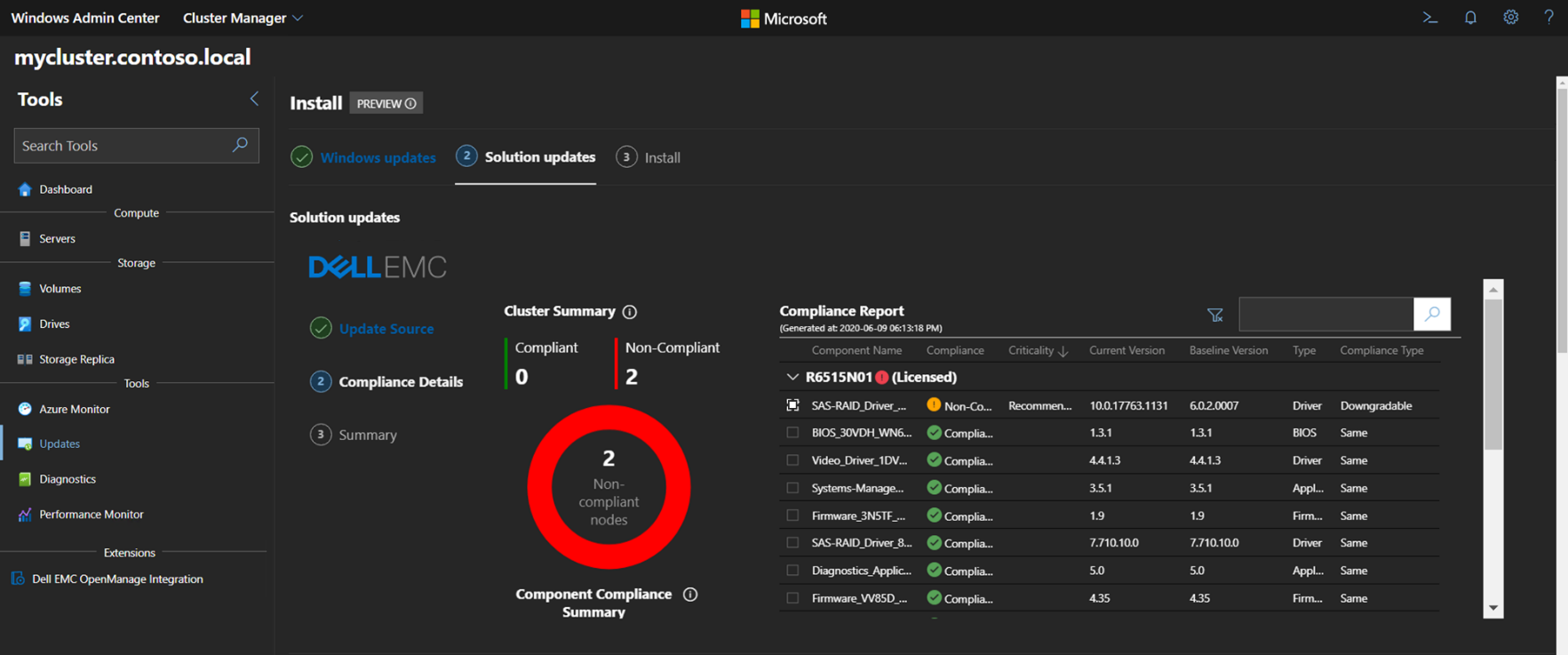Two weeks ago, Microsoft introduced some new insights for the future of Azure Stack HCI. I am really excited by the announcements for the next release. Microsoft tries to build the first true hybrid hyperconverged solution in the market. It’s a great news because that means that Azure Stack HCI is still a masterpiece in Microsoft strategy to build a hybrid world. Moreover, Microsoft finally simplifies the deployment and the management of an Azure Stack HCI cluster through Windows Admin Center and the Azure Portal. In this topic, I’d like to expose my thought about the new features announced for the next release of Azure Stack HCI.
Infrastructure stack improvement
For the next release of Azure Stack HCI, a new shinny OS will be delivered. This OS is a specialized host operating system for Azure Stack HCI. This OS is optimized for virtualization and comes only in Core Edition. As you can see in the below screenshot, Windows Server has been renamed in this OS by Azure Stack HCI. Microsoft has removed all features that are not bound with Azure Stack HCI. So, you can only install Hyper-V, Failover Cluster and features for Azure Stack HCI.
I love this announcement because we have a specialized OS that can be updated more often than Windows Server. Maybe Microsoft will decrease the time between each release to give new features more often than before. In addition, because this OS comes only in Core edition, you don’t need anymore to convince customers to remove GUI: now it’s mandatory. It’s a great news because I saw dozens of deployments where customers have installed custom start menu or Active Directory in the parent partition. Now they can’t.
The second great news is the native disaster recovery with stretch clustering. I was waiting for this feature for 4 years! Finally, they did it. We can deploy an Azure Stack HCI between two datacenters with an automatic failover. I can’t count the number of customers I lost because of the missing of stretch cluster.
They also improved the resync duration time for Storage Spaces Direct. All IT guys who managed Azure Stack HCI knows that resync can be time consuming. In Azure Stack HCI OS they improved the resync to reduce the time needed for this task:
Last but not the least, they integrated the one click upgrade for the full stack in Windows Admin Center. So, from a one-click, you can upgrade drivers, firmware and OS. It’s a major feature against Nutanix and VXRail to simplify the management. Obviously, this feature is available only for validated hardware.
Welcome to the Cloud world
In the next release of Azure Stack HCI, we will be able to integrate the cluster in Azure Active Directory. That means that a new console will be available in Azure to get insights about your On-Prem Azure Stack HCI. It’s a true hybrid integration!
Currently a few features are available through Azure Portal but in the feature should be able to:
- Open support incident for your Azure Stack HCI clusters
- Monitor Azure Stack HCI with Azure Monitor and get information from a single pane of glass
- Self-Service to delegate the VM creation for example
- Manage updates
This integration is great because lot of customers ask me how to monitor Azure Stack HCI and if you don’t have SCOM it’s by SNMP. Now we can integrate Azure Stack HCI in Azure Portal and configure automatically the monitoring.
Regarding the new support interface, I’m waiting to see the dedicated teams behind because currently I’m a little bit disappointed by the skill level of Microsoft support about Azure Stack HCI.
About cluster creation
Microsoft is improving the cluster creation extension in Windows Admin Center. When the extension will be GA, we will be able to create the cluster from Windows Admin Center (role installation, network and storage configuration, update, firmware update etc.). Before we had to create PowerShell script to create cluster or add nodes in the cluster. Now thanks to this extension, the nodes deployment will be easier than before so it’s a great news.
Two interfaces?
Microsoft shown us that some features are available through Azure Portal while some are available through Windows Admin Center. We know that two interfaces are not really user friendly. I heard that Microsoft is working hard to consolidate these interfaces, but I don’t have much information about that. Maybe in one year or two? Anyway, the integration is Azure is great because we can imagine in the future more feature automatically deploy such as ATP, monitoring, automation, Self-Service and so on … In other word, a modern System Center










